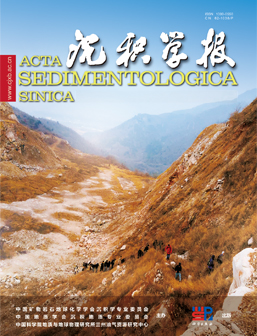Cenozoic initial widespread uplift of the Eastern Kunlun Mountains onset at approximately 20 Ma: Evidence from low-temperature thermochronology
doi: 10.14027/j.issn.1000-0550.2025.012
- Received Date: 2025-01-17
- Available Online: 2025-06-05
-
Key words:
- Eastern Kunlun Mountains /
- Cenozoic /
- Low-temperature thermochronology /
- Initial widespread uplift /
- Tectonic evolution
Abstract: [Objective] The uplift of the Tibetan Plateau is a direct expression of the geodynamic processes within Earth's interior caused by the collision of the India-Eurasian plates, significantly impacting the earth's critical zone. Investigating the uplift history of the plateau is essential for elucidating the deformation mechanisms of the continental lithosphere and remains a central scientific issue in deciphering Earth's multiple spheres interactions. Despite extensive studies, there remains intense debate regarding the uplift and expansion of the plateau. The timing of the uplift in the northern Tibetan Plateau is considered pivotal for resolving these controversies. The Eastern Kunlun Mountains, as a crucial geomorphic boundary in northern Tibet Plateau, form the southern margin of the northern plateau and serve as a critical conduit for the northward propagation of collision-related stress. Thus, the Eastern Kunlun Mountains is an ideal area to study the uplift processes of northern Tibetan Plateau. However, the timing of the initial uplift of the Eastern Kunlun Mountains remains highly debated. [Methods] A comprehensive low-temperature thermochronological analysis of the bedrock in the Eastern Kunlun Mountains to constrain its Cenozoic uplift history. To this end, results from 37 low-temperature thermochronology studies in the region were integrated, including 203 apatite fission track data points and 142 apatite (U-Th)/He data points. During the dataset compilation stage, the sample selection criteria of low-temperature thermochronology were strictly followed, and a series of rigorous data screening strategies were established to minimize disturbances from experimental errors, sample characteristics, and complex thermal histories, thereby enhancing the accuracy and reliability of the dataset. The analysis involved several steps: first, the low-temperature thermochronological age distribution were visualized; second, the relationship between mean track length and age was established; and third, thermal history modeling results were compiled. By integrating these methods, one can construct a detailed and comprehensive low-temperature thermochronology framework that serves as the basis for assessing the Cenozoic uplift history of the Eastern Kunlun Mountains. [Results and Conclusions] Since the Late Cretaceous, the surface rocks of the Eastern Kunlun Mountains have generally remained in a relatively stable or slowly cooling state, within the apatite fission track partial annealing zone and the apatite (U-Th)/He partial retention zone. During the Paleogene, the Eastern Kunlun Mountains did not form a significant topographic barrier, and the drainage systems between adjacent basins were likely interconnected. Although, the possibility that sporadic highlands in localized areas of the Eastern Kunlun Mountains provided sediment sources for adjacent basins cannot be entirely excluded, the data indicate that initial widespread uplift of the Eastern Kunlun Mountains did not occur until approximately 20 Ma. At this time, a rapid uplift event took place, with the displacement of rocks relative to the surface estimated to be no less than the length of the rock column recording early Miocene apatite (U-Th)/He (22~17 Ma) and apatite fission track (23~15 Ma) age components, approximately 2 km. This finding provides new evidence for understanding the disintegration timing of the Paleo-Qaidam Basin, the paleoelevation history of the northern Tibetan Plateau during the early Miocene, as well as the uplift processes and dynamics mechanisms involved.
| Citation: | Cenozoic initial widespread uplift of the Eastern Kunlun Mountains onset at approximately 20 Ma: Evidence from low-temperature thermochronology[J]. Acta Sedimentologica Sinica. doi: 10.14027/j.issn.1000-0550.2025.012 |






 DownLoad:
DownLoad: